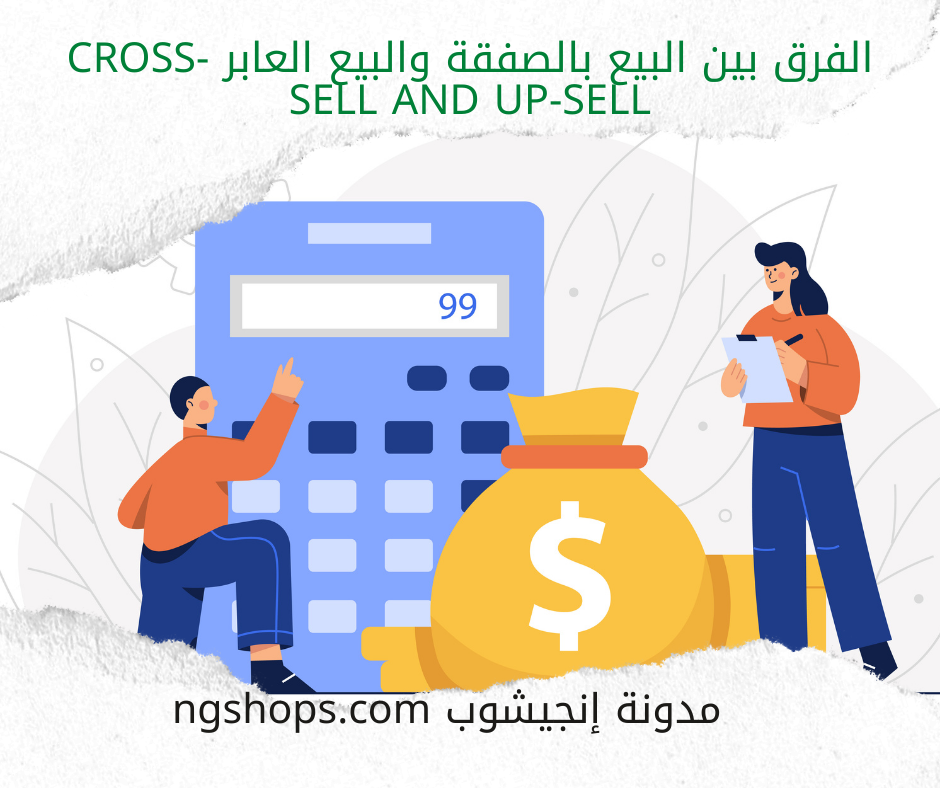The difference between bargain selling and cross-sell and up-sell
When a customer buys one of your products and likes this product, there is a good opportunity to offer the customer another product that is related to the first product and can be used together. This is what is called deal selling or cross-selling, which includes selling some products with other products that the customer intends to buy.
What is transactional selling and cross-selling, and what is the difference between them, which we will explain in the following lines.
Cross selling
It is a process through which the customer is encouraged to buy some products in addition to the basic products that he wants to buy, and these products complement each other and is the motivation that makes the customer buy them.
This process takes place when the customer completes his first purchase, so the store suggests products that are similar or complementary to what he will buy, or offers him a large discount when purchasing two products together.
Deal sale
Deal selling works on selling additional products with an advanced and distinct version of the products he wants to buy for a greater cost in exchange for giving him a premium version, upgrading him, or improving the operations he carries out through the store. Deal selling depends on the product itself and the advanced versions of it and not the products that are included with it. The product you want to purchase.
Advantages of bargain selling and cross selling
The main goal of both methods is to increase sales and revenue gross profit In addition to increasing the value of the company or store among customers, below we explain the other most important advantages that bargain selling and cross-selling offer.
- Personalize your customer experience
Understanding customers' needs and meeting their desires and aspirations are among the basic points that marketers rely on, in addition to product quality and price. Transaction and cross-selling techniques depend on knowing what customers prefer and what they are looking for, which allows you to customize your experience to obtain a successful customer experience.
- Customer retention
The idea of cross-selling and transactional selling is based on providing the best ways to sell, including offering gifts and discounts, in addition to promoting the customer and providing the best products available in the store, which creates permanent customers and retains them for long periods.
- Increase your customers' confidence
Providing products that are specific to the customer’s interests and needs will make the customer trust your brand, due to seeing the extent to which you understand his interests and provide him with the best products.
The difference between cross-selling and bargain selling
Transactional selling and cross-selling procedures take place in the penultimate stage of completing the purchase process by the customer so that the two strategies have an opportunity to announce themselves and give the customer other experts to sell. Both processes are necessary to improve selling and raise the percentage of sales. Store owners and companies can use the two processes together in many ways. Sales operations, despite the presence of slight differences and different effects on the line of business and the selling system, would encourage the sale of a higher-ranking and more advanced product, while cross-selling encourages an increase in the number of products sold, and the company’s system determines which of the two types will be better and more valuable to the plan. Store or company business.
Read also - How to increase market share
How are cross-selling and cross-selling techniques used?
To obtain the desired results from applying the cross-selling or transactional selling technique, you will have to follow some important points that will make the technique successful and give you a greater profit margin.
- Use cross-selling and transactional selling techniques in a realistic way
Your suggestion of some other products to the customer, whether through bargain sales or cross-selling, may lead to his loss if these suggestions are outside the field from which the customer wants to buy a product. The suggestions must be compatible with the customer’s needs, so companies and stores must know what the customer wants in terms of needs. Desires, identifying products that may be of interest to customers, and presenting bargain or cross-sell offers.
- Be fair and honest with customers
If you use cross-selling or deal selling in an unfair and non-transparent manner, this will cause you to lose customers. On the contrary, if you exploit this technique with complete transparency in providing the appropriate products, this will return customer loyalty to your brand.
- Clarify the value the additional product will provide
For the success of cross-selling or transactional selling, you must ensure that the added product will add value to the customer and that he can benefit from it. You can find out this by studying the customer’s case, positive customer evaluations, and knowing what benefits they get from using the product.
- Take advantage of sales partners
To obtain greater opportunities from cross-selling and transactional selling, you can use partners who sell your products on your behalf, as they will be able to reach a larger audience base than the company’s own work team, and achieve the goal of using this technology.
- Customer reward
When your plan is successful and the goal of selling, whether transient or transactional, is achieved, the customer must be rewarded for that, whether through a message of thanks or providing free products or discount codes for upcoming purchases. This method helps in gaining the customer’s trust and loyalty, which prompts him to buy several times.
Therefore, bargain selling and cross-selling are techniques and strategies that work to expand the scope of sales and raise the percentage of revenues. You can make this technique successful and benefit from its gains by applying it in the correct ways that ensure that the customer stays in your store and completes the sale process added to one of the two strategies.

